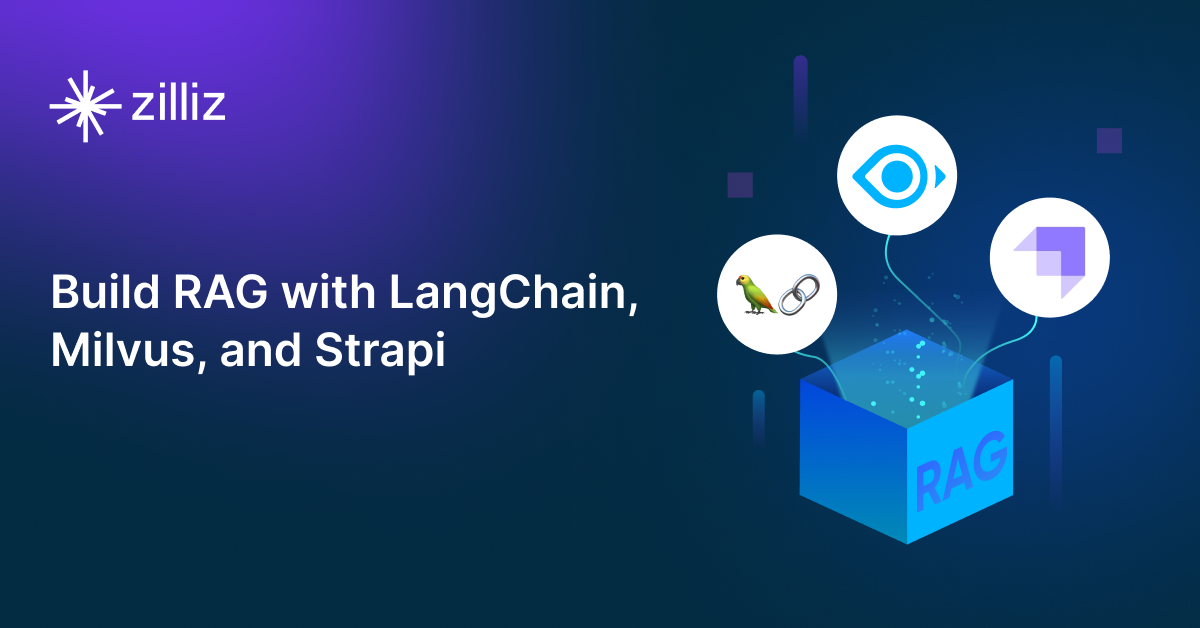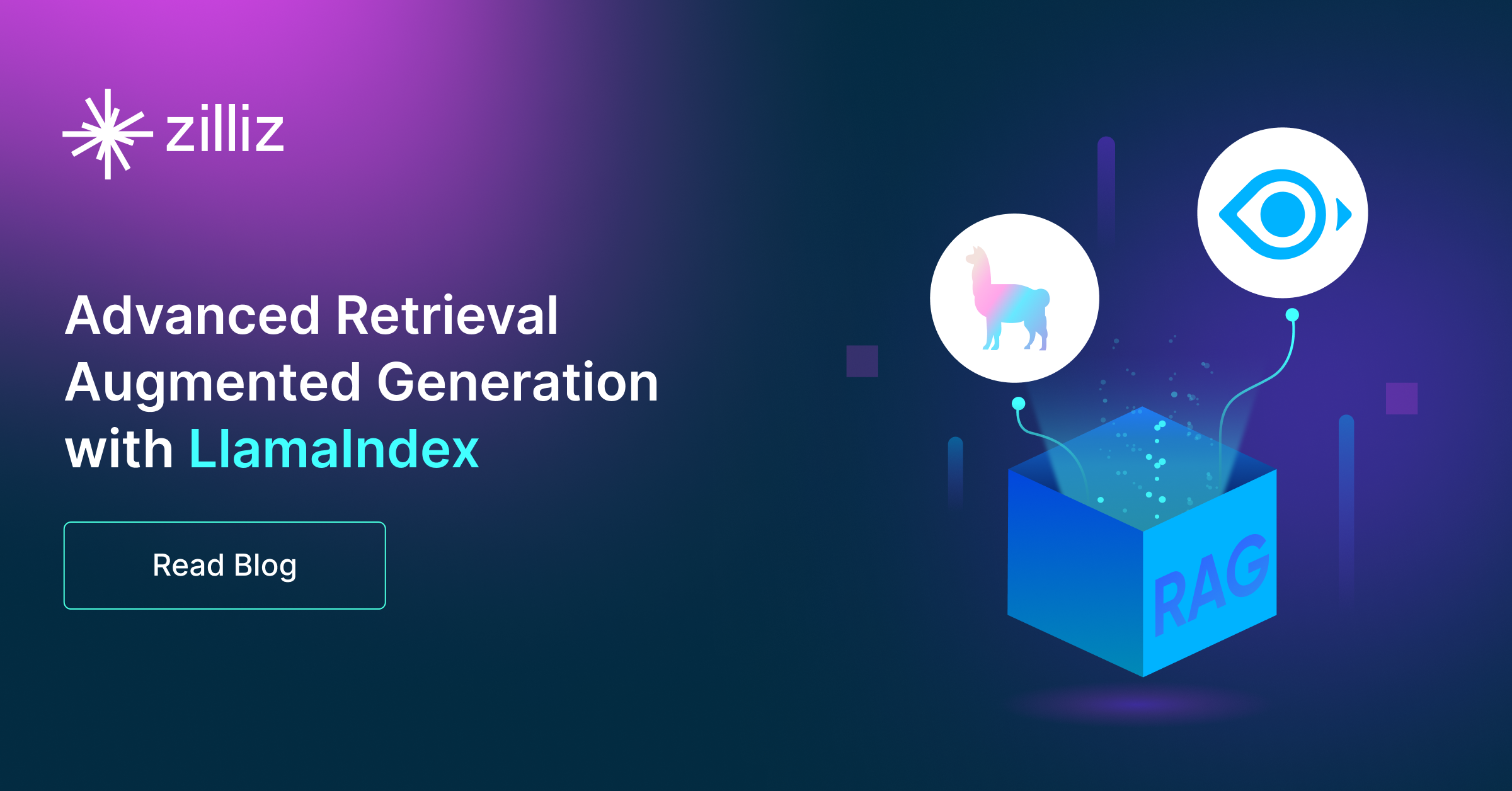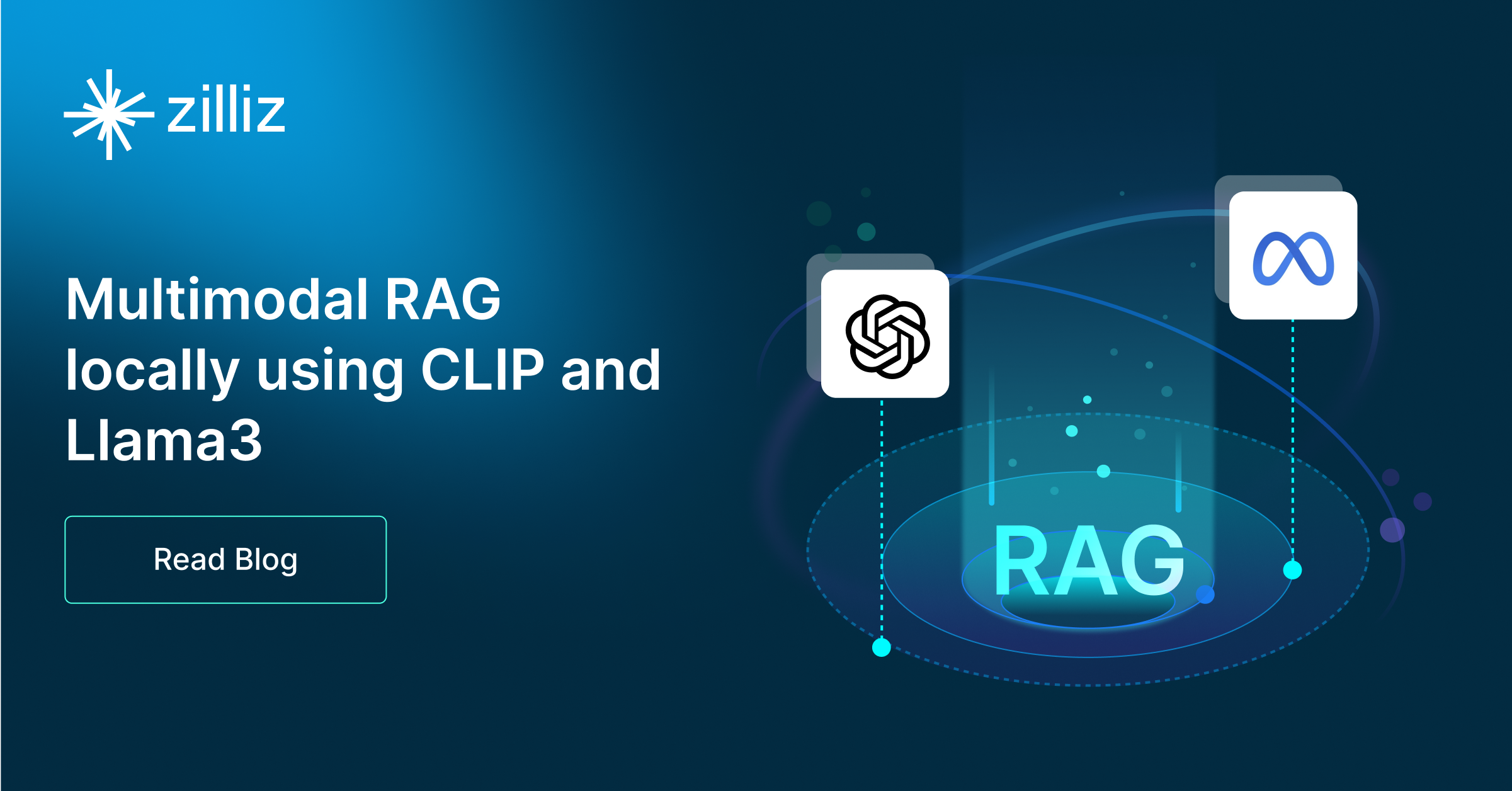Build RAG Chatbot with LangChain, Zilliz Cloud, Fireworks AI Deepseek R1 Distill Qwen 7B, and Cohere embed-english-v2.0
Introduction to RAG
Retrieval-Augmented Generation (RAG) is a game-changer for GenAI applications, especially in conversational AI. It combines the power of pre-trained large language models (LLMs) like OpenAI’s GPT with external knowledge sources stored in vector databases such as Milvus and Zilliz Cloud, allowing for more accurate, contextually relevant, and up-to-date response generation. A RAG pipeline usually consists of four basic components: a vector database, an embedding model, an LLM, and a framework.
Key Components We'll Use for This RAG Chatbot
This tutorial shows you how to build a simple RAG chatbot in Python using the following components:
- LangChain: An open-source framework that helps you orchestrate the interaction between LLMs, vector stores, embedding models, etc, making it easier to integrate a RAG pipeline.
- Zilliz Cloud: a fully managed vector database-as-a-service platform built on top of the open-source Milvus, designed to handle high-performance vector data processing at scale. It enables organizations to efficiently store, search, and analyze large volumes of unstructured data, such as text, images, or audio, by leveraging advanced vector search technology. It offers a free tier supporting up to 1 million vectors.
- Fireworks AI Deepseek R1 Distill Qwen 7B: A compact yet powerful language model designed for high-performance NLP tasks. With its 7 billion parameters, it effectively balances efficiency and accuracy, making it ideal for text generation, summarization, and chat applications. It is particularly suited for developers needing a versatile model that delivers rapid insights while conserving computational resources.
- Cohere embed-english-v2.0: This model specializes in generating high-quality embeddings for English text, enhancing semantic understanding in various applications. Its strengths lie in capturing nuanced meanings and context, making it ideal for tasks like semantic search, recommendation systems, and clustering. Efficient and scalable, it's perfect for developers looking to integrate advanced text analysis into their applications.
By the end of this tutorial, you’ll have a functional chatbot capable of answering questions based on a custom knowledge base.
Note: Since we may use proprietary models in our tutorials, make sure you have the required API key beforehand.
Step 1: Install and Set Up LangChain
%pip install --quiet --upgrade langchain-text-splitters langchain-community langgraph
Step 2: Install and Set Up Fireworks AI Deepseek R1 Distill Qwen 7B
pip install -qU "langchain[fireworks]"
import getpass
import os
if not os.environ.get("FIREWORKS_API_KEY"):
os.environ["FIREWORKS_API_KEY"] = getpass.getpass("Enter API key for Fireworks AI: ")
from langchain.chat_models import init_chat_model
llm = init_chat_model("accounts/fireworks/models/deepseek-r1-distill-qwen-7b", model_provider="fireworks")
Step 3: Install and Set Up Cohere embed-english-v2.0
pip install -qU langchain-cohere
import getpass
import os
if not os.environ.get("COHERE_API_KEY"):
os.environ["COHERE_API_KEY"] = getpass.getpass("Enter API key for Cohere: ")
from langchain_cohere import CohereEmbeddings
embeddings = CohereEmbeddings(model="embed-english-v2.0")
Step 4: Install and Set Up Zilliz Cloud
pip install -qU langchain-milvus
from langchain_milvus import Zilliz
vector_store = Zilliz(
embedding_function=embeddings,
connection_args={
"uri": ZILLIZ_CLOUD_URI,
"token": ZILLIZ_CLOUD_TOKEN,
},
)
Step 5: Build a RAG Chatbot
Now that you’ve set up all components, let’s start to build a simple chatbot. We’ll use the Milvus introduction doc as a private knowledge base. You can replace it with your own dataset to customize your RAG chatbot.
import bs4
from langchain import hub
from langchain_community.document_loaders import WebBaseLoader
from langchain_core.documents import Document
from langchain_text_splitters import RecursiveCharacterTextSplitter
from langgraph.graph import START, StateGraph
from typing_extensions import List, TypedDict
# Load and chunk contents of the blog
loader = WebBaseLoader(
web_paths=("https://milvus.io/docs/overview.md",),
bs_kwargs=dict(
parse_only=bs4.SoupStrainer(
class_=("doc-style doc-post-content")
)
),
)
docs = loader.load()
text_splitter = RecursiveCharacterTextSplitter(chunk_size=1000, chunk_overlap=200)
all_splits = text_splitter.split_documents(docs)
# Index chunks
_ = vector_store.add_documents(documents=all_splits)
# Define prompt for question-answering
prompt = hub.pull("rlm/rag-prompt")
# Define state for application
class State(TypedDict):
question: str
context: List[Document]
answer: str
# Define application steps
def retrieve(state: State):
retrieved_docs = vector_store.similarity_search(state["question"])
return {"context": retrieved_docs}
def generate(state: State):
docs_content = "\n\n".join(doc.page_content for doc in state["context"])
messages = prompt.invoke({"question": state["question"], "context": docs_content})
response = llm.invoke(messages)
return {"answer": response.content}
# Compile application and test
graph_builder = StateGraph(State).add_sequence([retrieve, generate])
graph_builder.add_edge(START, "retrieve")
graph = graph_builder.compile()
Test the Chatbot
Yeah! You've built your own chatbot. Let's ask the chatbot a question.
response = graph.invoke({"question": "What data types does Milvus support?"})
print(response["answer"])
Example Output
Milvus supports various data types including sparse vectors, binary vectors, JSON, and arrays. Additionally, it handles common numerical and character types, making it versatile for different data modeling needs. This allows users to manage unstructured or multi-modal data efficiently.
Optimization Tips
As you build your RAG system, optimization is key to ensuring peak performance and efficiency. While setting up the components is an essential first step, fine-tuning each one will help you create a solution that works even better and scales seamlessly. In this section, we’ll share some practical tips for optimizing all these components, giving you the edge to build smarter, faster, and more responsive RAG applications.
LangChain optimization tips
To optimize LangChain, focus on minimizing redundant operations in your workflow by structuring your chains and agents efficiently. Use caching to avoid repeated computations, speeding up your system, and experiment with modular design to ensure that components like models or databases can be easily swapped out. This will provide both flexibility and efficiency, allowing you to quickly scale your system without unnecessary delays or complications.
Zilliz Cloud optimization tips
Optimizing Zilliz Cloud for a RAG system involves efficient index selection, query tuning, and resource management. Use Hierarchical Navigable Small World (HNSW) indexing for high-speed, approximate nearest neighbor search while balancing recall and efficiency. Fine-tune ef_construction and M parameters based on your dataset size and query workload to optimize search accuracy and latency. Enable dynamic scaling to handle fluctuating workloads efficiently, ensuring smooth performance under varying query loads. Implement data partitioning to improve retrieval speed by grouping related data, reducing unnecessary comparisons. Regularly update and optimize embeddings to keep results relevant, particularly when dealing with evolving datasets. Use hybrid search techniques, such as combining vector and keyword search, to improve response quality. Monitor system metrics in Zilliz Cloud’s dashboard and adjust configurations accordingly to maintain low-latency, high-throughput performance.
Fireworks AI DeepSeek R1 Distill Qwen 7B optimization tips
DeepSeek R1 Distill Qwen 7B balances efficiency and quality, making it ideal for cost-effective RAG applications. Optimize retrieval by reducing the number of retrieved documents to only the most relevant ones, ensuring minimal context window saturation. Use structured prompts with bullet points or ordered lists for clarity. Fine-tune temperature (0.1–0.3) to balance accuracy and response diversity. Leverage caching for frequently accessed queries to reduce API overhead. Use response streaming to enhance user experience in real-time applications. In high-throughput scenarios, batch API requests and take advantage of Fireworks AI’s infrastructure for efficient scaling. If deploying in a multi-model setup, use Qwen 7B for lightweight summarization and preliminary filtering before escalating queries to larger models.
Cohere embed-english-v2.0 optimization tips
Cohere embed-english-v2.0 is a robust English-language embedding model, ideal for fast and accurate semantic retrieval in RAG systems. To optimize performance, preprocess input text by removing redundant information and normalizing formatting. Apply techniques like stemming or lemmatization to reduce the dimensionality of the input without losing meaning. Use high-performance indexing algorithms like HNSW for efficient vector search. When working with large-scale systems, batch embeddings for faster processing and minimize API latency. Consider implementing dimensionality reduction techniques to compress embeddings and reduce storage costs while retaining sufficient accuracy. For large document collections, periodically refresh the embeddings to ensure that they stay relevant to evolving data.
By implementing these tips across your components, you'll be able to enhance the performance and functionality of your RAG system, ensuring it’s optimized for both speed and accuracy. Keep testing, iterating, and refining your setup to stay ahead in the ever-evolving world of AI development.
RAG Cost Calculator: A Free Tool to Calculate Your Cost in Seconds
Estimating the cost of a Retrieval-Augmented Generation (RAG) pipeline involves analyzing expenses across vector storage, compute resources, and API usage. Key cost drivers include vector database queries, embedding generation, and LLM inference.
RAG Cost Calculator is a free tool that quickly estimates the cost of building a RAG pipeline, including chunking, embedding, vector storage/search, and LLM generation. It also helps you identify cost-saving opportunities and achieve up to 10x cost reduction on vector databases with the serverless option.
 Calculate your RAG cost
Calculate your RAG cost
What Have You Learned?
What have you learned? Wow! What an exciting journey we’ve been on together! This tutorial opened up a world where cutting-edge technology meets creativity, and you now have a comprehensive understanding of how to integrate the crucial components that make up an advanced Retrieval-Augmented Generation (RAG) system.
You’ve learned how to leverage a robust framework to seamlessly bring together all these elements, ensuring that they sync perfectly to maximize their combined potential. The vector database, powered by Zilliz Cloud, displayed its incredible capabilities in facilitating rapid and efficient searches, making it easier than ever to locate the data you need instantly. With Fireworks AI’s Deepseek R1 Distill Qwen 7B LLM, you’ve seen first-hand how conversational intelligence can transform your applications, enabling richer interactions and more engaging user experiences. And let’s not forget about the embedding model, which generates deep semantic representations that truly understand the context of your content.
Along the way, we also shared optimization tips and introduced a nifty free cost calculator to help you manage your resources more effectively. Now, with all this powerful knowledge at your fingertips, it’s time to take action! Dive into building, optimizing, and innovating your own RAG applications. The possibilities are endless, and your creativity is the only limit! So, roll up your sleeves and let’s make it happen—your groundbreaking project is just around the corner!
Further Resources
🌟 In addition to this RAG tutorial, unleash your full potential with these incredible resources to level up your RAG skills.
- How to Build a Multimodal RAG | Documentation
- How to Enhance the Performance of Your RAG Pipeline
- Graph RAG with Milvus | Documentation
- How to Evaluate RAG Applications - Zilliz Learn
- Generative AI Resource Hub | Zilliz
We'd Love to Hear What You Think!
We’d love to hear your thoughts! 🌟 Leave your questions or comments below or join our vibrant Milvus Discord community to share your experiences, ask questions, or connect with thousands of AI enthusiasts. Your journey matters to us!
If you like this tutorial, show your support by giving our Milvus GitHub repo a star ⭐—it means the world to us and inspires us to keep creating! 💖
- Introduction to RAG
- Key Components We'll Use for This RAG Chatbot
- Step 1: Install and Set Up LangChain
- Step 2: Install and Set Up Fireworks AI Deepseek R1 Distill Qwen 7B
- Step 3: Install and Set Up Cohere embed-english-v2.0
- Step 4: Install and Set Up Zilliz Cloud
- Step 5: Build a RAG Chatbot
- Optimization Tips
- RAG Cost Calculator: A Free Tool to Calculate Your Cost in Seconds
- What Have You Learned?
- Further Resources
- We'd Love to Hear What You Think!
Content
Vector Database at Scale
Zilliz Cloud is a fully-managed vector database built for scale, perfect for your RAG apps.
Try Zilliz Cloud for Free


